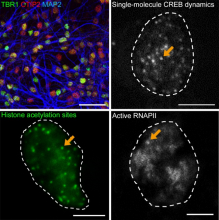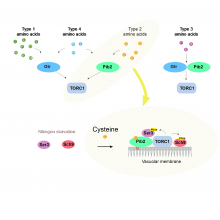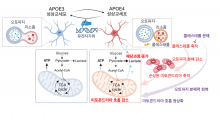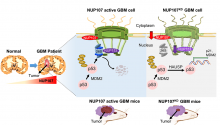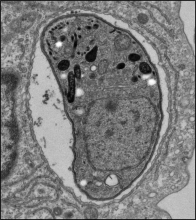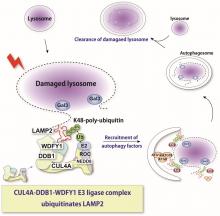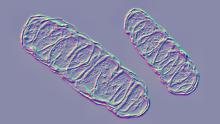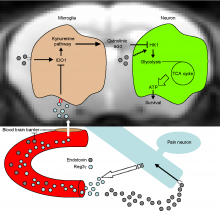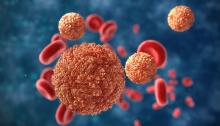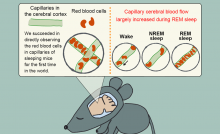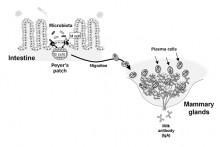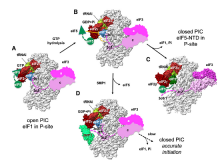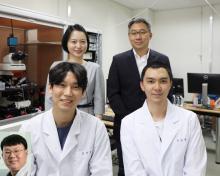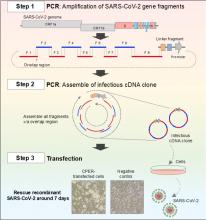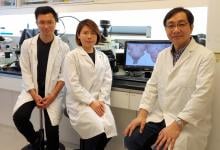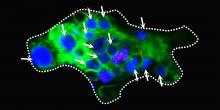Cell Reports
News
26 Dec 2023
Researchers from Osaka University and Shenzhen Bay Laboratory found that neuronal activity induces gene expression at sites of acetylation by promoting the emergence of cAMP response element binding protein (CREB), CREB binding protein (CBP), and RNA polymerase II. These proteins are targeted to the appropriate sites by CBP-mediated histone acetylation at activity-dependent gene loci.
21 Dec 2023
Researchers from Osaka University have discovered how amino acids activate a key cell, TORC1, which is a master regulator in living organisms that controls whether cells grow or recycle their contents in yeast. Notably, the team found that the amino acid cysteine is sensed by a protein called Pib2 and that the two bind together to trigger TORC1. This is important because faulty TORC1 has been linked to disease such as cancer.
03 Nov 2023
- Confirmed the link between cholesterol accumulated in lysosomes and decreased mitochondrial respiration due to the APOE4 genotype and proposed a possible reason that explains a decline in brain function
- Research results published in Cell Reports
01 Sep 2023
Researchers at Kanazawa University report in Cell Reports how alterations in the nuclear pores lead to the degradation of anti-tumor proteins.
05 Jun 2023
Researchers from Osaka University developed an in vivo CRISPR screen to analyze factors affecting Toxoplasma gondii fitness in healthy and immunodeficient mice. Mice were infected with Toxoplasma containing CRISPR libraries that targeted specific genes; genetic sequencing was then performed to identify which genes are important to fitness. The genetic screen clarified the contributions of host genetics and parasite genetics and can contribute to the development of strategies for toxoplasmosis treatment and prevention.
20 Sep 2022
A research group led by the Institute of Industrial Science, The University of Tokyo, finds that sensory neurons in human skin modulate melanocytes via the secretion of Repulsive Guidance Molecule B
16 Sep 2022
Osaka University researchers identified the specific protein complex that recognizes when cellular organelles called lysosomes become damaged. When this occurs, the CUL4A protein complex transfers a molecular tag, called polyubiquitin, to a lysosomal protein known as LAMP2. WDFY1, another protein in the complex, is able to recognize and interact with LAMP2. These initial steps are critical to beginning a process called lysophagy, in which these damaged lysosomes are cleared away by the cell.
15 Sep 2022
Cellular structures called mitochondria depend on microproteins to assist and control the assembly of a protein chain that extracts energy from nutrients, according to a new study by scientists in Singapore.
08 Mar 2022
A research team led by the National Institute for Physiological Sciences and joined by Hokkaido University explored the role of pain neurons in the regulation of endotoxic death. They found that peptide named Reg3γ acts as a pain neuron-enriched brain-targeted hormone that protects the host from endotoxic death.
15 Dec 2021
Zika virus infection hijacks glucose metabolism for its own good and to the detriment of infected foetuses.
09 Sep 2021
Researchers from the University of Tsukuba and Kyoto University find that capillary blood flow in the brain, which is important for delivering oxygen and nutrients and removing waste products, is increased in mice during the dream-active phase of sleep.
08 Sep 2021
A research group has discovered an interorgan network between the mammary glands and the small intestine that plays an essential role in transferring antibodies via breastfeeding.
17 Aug 2021
Cells translate their genetic material at rapid rates with exquisite precision to reproduce, repair damage or even combat disease. But the process can deregulate and give rise to disease. Byproducts of errant processes can build up like gunk in the gears, especially around neurons, breaking down the repair mechanisms and causing further damage and even neurodegenerative disorders such as Alzheimer’s disease.
12 Aug 2021
Experiments conducted on genetically modified mice clarify the role of a protein in regulating properties of specific hippocampal neural circuits
13 Apr 2021
Researchers from Osaka University and Hokkaido University develop a system for analyzing mutations in SARS-CoV-2 that is much simpler and faster than existing methods.
01 Apr 2020
A research team led by Professor Kin-ming KWAN from the School of Life Sciences at The Chinese University of Hong Kong (CUHK) has recently discovered a novel mechanism by which extrinsic signaling factors modulate the fate transition of neural progenitors to allow the generation of specific neuronal subtypes. This work provides important insight into stem cell biology and the regeneration of neuronal cells, and contributes to the development of neurological therapy for diseases like autism spectrum disorders and hereditary cerebellar ataxia. The research is published in the renowned international scientific journal Cell Reports.
14 Feb 2020
DGIST Professor Cheil Moon’s research team identified the molecular mechanism of innate olfactory behaviors. Clarified sensory defect accompanying neurodevelopmental disorder and cancer; will contribute to early diagnosis and improving anti-cancer drug side effects
05 Jun 2019
Some teenagers harbor catastrophic changes to their genomes that can lead to lung cancer later on in life, even if they never smoke
24 Apr 2019
Fruit fly studies reveal proteins that promote healthy nervous system development by preventing the reversal of nerve cell differentiation.
20 Mar 2019
A honeycomb-shaped brace in plants keeps them fit by precisely coordinating the discarding of organs, such as flowers and leaves.
06 Mar 2019
A research team consisting of scientists from The Hong Kong University of Science and Technology (HKUST) (HKUST) and Beijing Tiantan Hospital have uncovered the mutational mechanism of how a rare and deadly brain cancer –secondary glioblastoma (sGBM) – progresses from its less lethal type.
Events
Sorry, no events coming up for this topic.
Researchers
Sorry, no researchers coming up for this topic.
Giants in history
Sorry, no researchers coming up for this topic.


